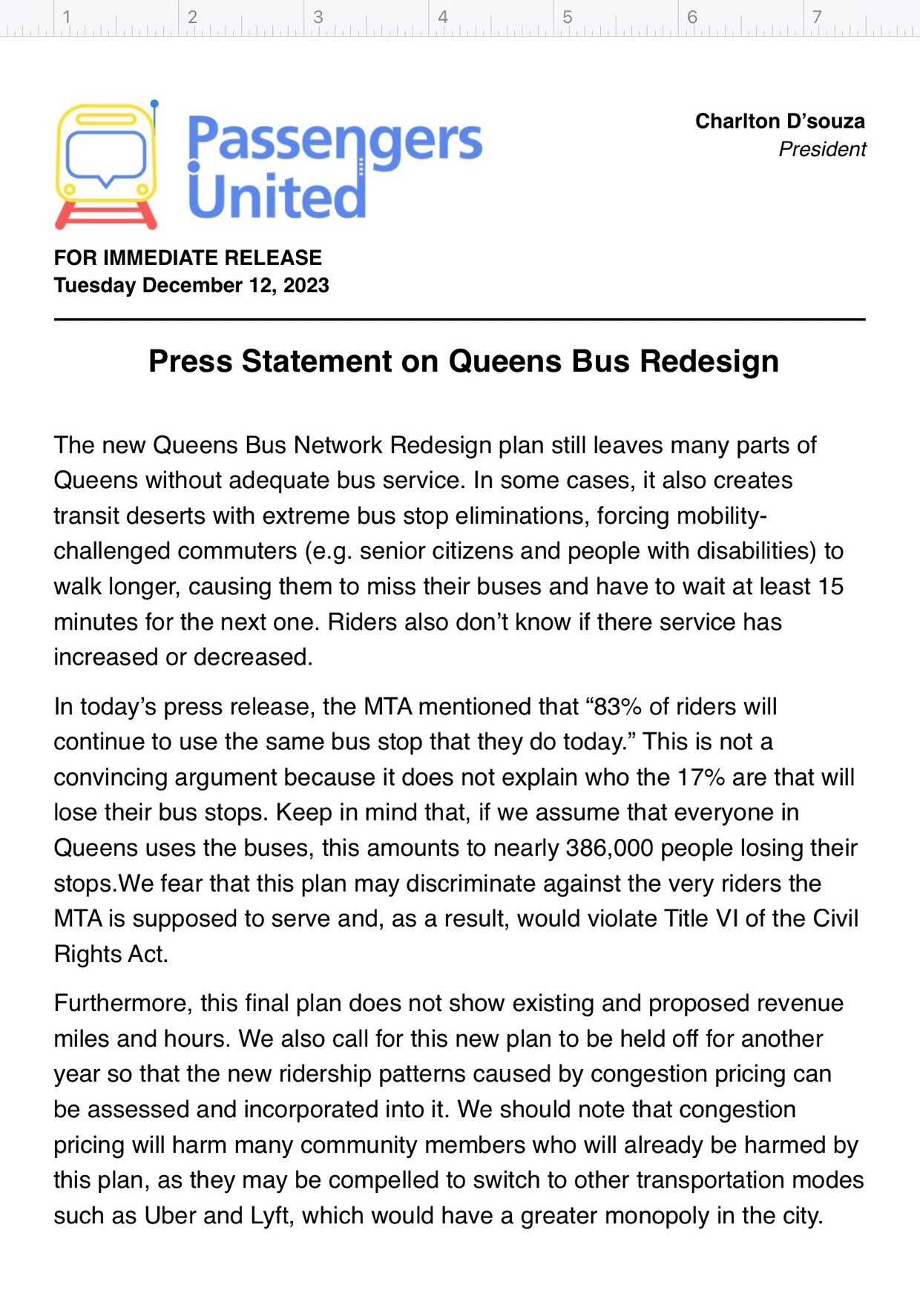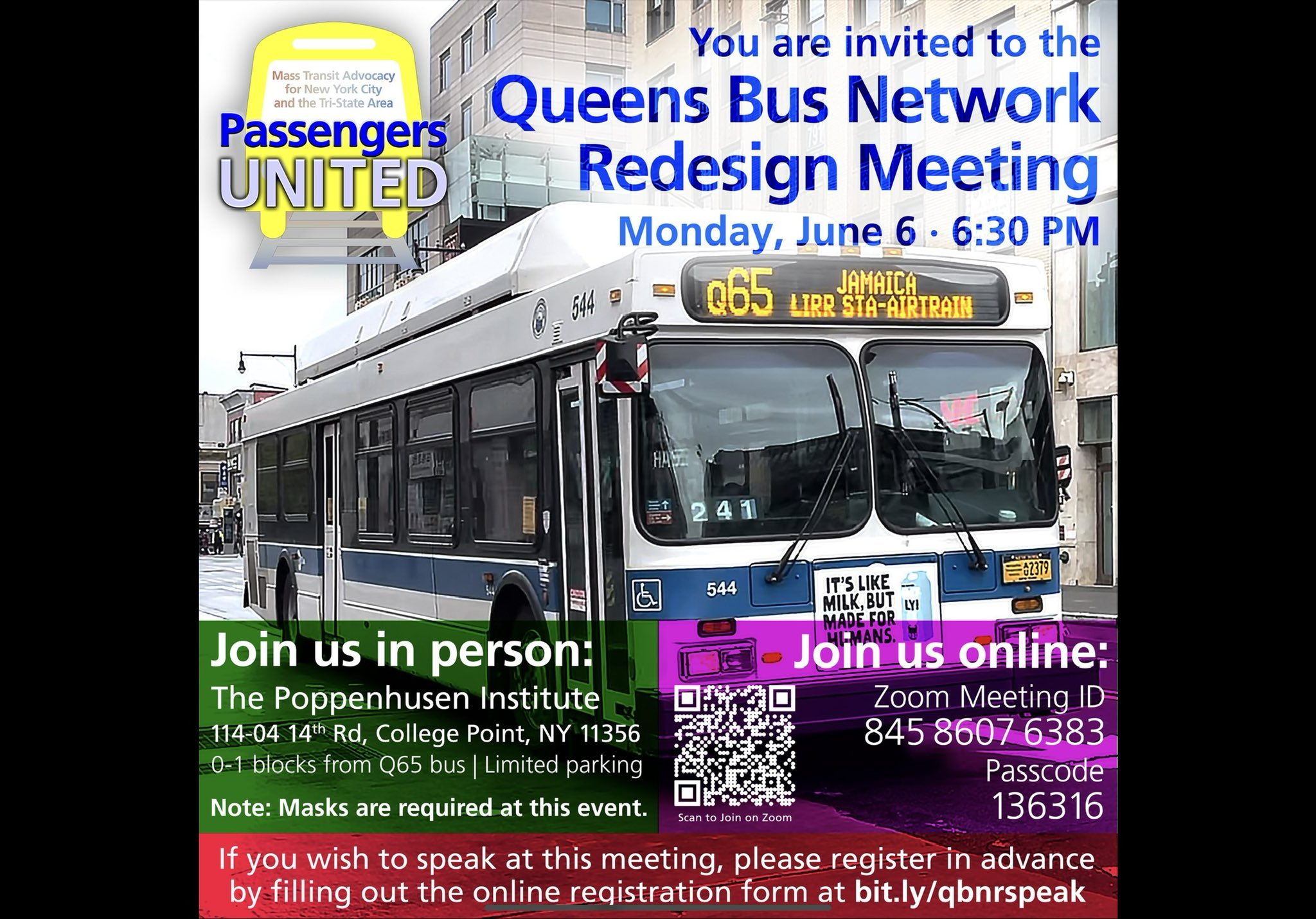
With the MTA’s Queens Bus Network Redesign project in its final stages, Community Board 11 in Northeast Queens voted down a motion endorsing the proposal as it currently stands.
At their meeting on Monday, Apr. 1, board members and local residents said their main problem is with the changes to the Q13 and Q31 bus routes in Bayside. In particular, Bell Boulevard, a popular commercial corridor for shopping and dining which is part of the bus routes, would see a significant reduction in bus service if the plan goes into effect as is.
Despite the concerns, the board’s transportation committee decided to approve the plan given the vast improvements that the MTA made based on community input from initial drafts.
But at the end of the meeting, where issues with the bus redesign plan were one of the main topics of discussion, the motion to recommend the plan failed to pass in a vote of 19-14.
The MTA’s initiative to rehaul the city’s largest bus system first launched in 2019 with the goal of providing faster and more convenient service to see an increase in ridership. The process was paused due to the pandemic until it was restarted in 2021. After rounds of drafts based on community input, the final plan was published in Dec. 2023.
Throughout the review process, community boards have analyzed the proposed route adjustments within their districts, attended detailed presentations by MTA representatives, and voiced their concerns.
“We’ve been working on this… for years,” said CB11 Transportation Committee Chair Victor Dadras. “I will say that we had lots of issues. The MTA to their credit, did extensive work based upon the comments they received, not just from us, but from the community.”
However, the board members were unable to overlook their two primary concerns and thus could not align their vote with the transportation committee’s recommendation. Their concerns were reinforced by members of the Bayside Village Business Improvement District, local civic groups and transportation advocates.
They collectively cited their disapproval with the reduction in service along Bell Boulevard, which could hurt both local businesses and the consumers. They also cite the proposed increase in distance between stops as a major drawback of the plan overall.
The existing Q31 runs between Bay Terrace and Jamaica along Utopia Parkway. And under the new plan, 84 stops will be removed along Bell Boulevard, 47th Avenue, 48th Avenue. While the route will be extended by slightly more than a mile, the average distance between stops is increasing from 762 feet to 1,224 feet.
Increased spacing between stops under that new plan has been a chief concern among critics of the plan who say it would be a burden for those with mobility issues such as elderly and disabled riders. But the MTA says that it will allow them to speed up service by cutting out stops they say are underutilized.
The Q13, which goes from Fort Totten to Flushing, will still run along Bell Boulevard but 6 stops in each direction will be removed. Along the entire route, the average distance between stops will almost double from 688 feet to 1,146 feet under the new proposal.
“We’ll have no way to get to the shopping and restaurants on Bell,” said board member Jena Lanzetta, who is also President of the Northwest Bayside Civic Association. “We need to go back to the drawing board and I will not be voting for this.”













